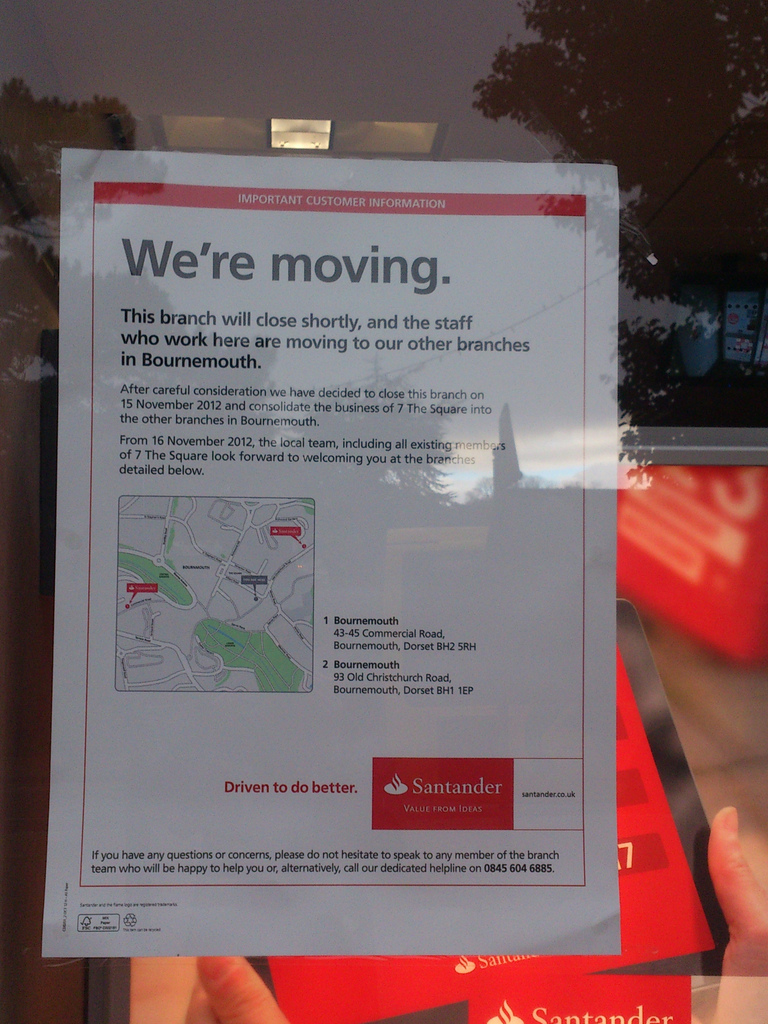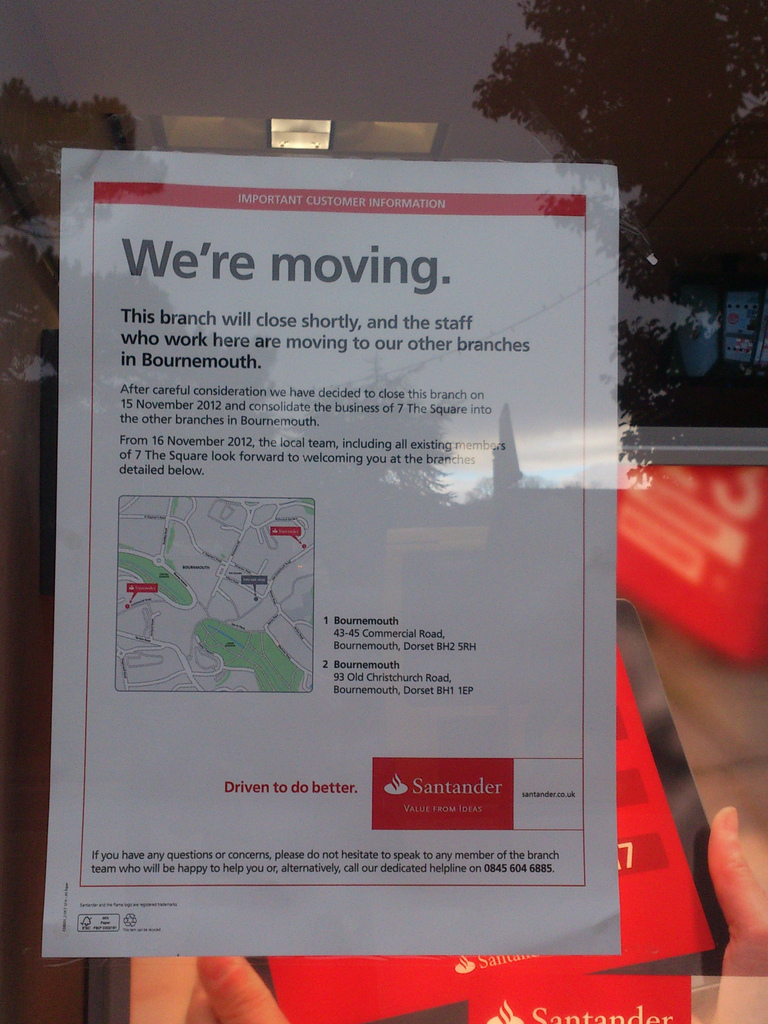The Retail Design Institute’s 2014 “Store of the Year” award was presented to a concept for Umpqua bank! Some banking myths were definitely broken here.
And I think that all our discussions about reinventing the branch should be seen in light of the next wave of innovation which is coming soon.
1. Get rid of the original definition
When we think of a branch, what comes to mind? – tellers, opening an account, deposits, customer service, cashiers checks and so on. The trouble with that picture is that these are all activities that have been replaced by the web and mobile phones. In fact, 10 years ago, these capabilities were provided in the bank branch because there was not another way to do them The branch was the customer interaction medium. The branch WAS the bank. That’s not true any more.
So we must question the momentum of the charging herd. Stop comparing the branch experience with the online experience. Stop trying to plug the hole in the floodgates.
2. Define the new branch
Is the branch now expected to serve a very different, much more profitable business? For banks the answer is yes, and perhaps for retail, the answer is a resounding positive too. Too much time has been spent on trying to counter the movement of customers from one channel to another. It’s time to help that movement and get on with bigger, better things. Browse any bank’s website. There are so many things we wish they’d make easy for us. Advice on retirement savings, anyone? Or how about financial management in our small businesses? How about being the backbone of financial transactions again and stop letting third parties ride on your infrastructure?
The primary use cases that make up the current definition of the branch ought to take a back seat. We need to look at the future.
3. Capabilities we need – ROI based on top line, not cost savings
The concept of Omni-Channel customer experience has changed for a bank. It’s really about “Omni-Channel relationships” – with the data, transactions, people, motivations and history stored centrally for “multiple stakeholders” to contextually access. And given that the old definition of the branch is being redefined, we should revisit the Omni Channel capabilities we are developing as well. Do we really need to service the teller better? Or can we use the same technology investment dollars to tell the “branch adviser” about how the customer manages their money instead? The underlying need of the customer must come across more clearly in the new model. Why are customers doing what they do? What will make their lives easier? B2B or B2C, we are in a world where advantages of information asymmetry and lack-of-access are disappearing. The real advantage is in creating a partnership with the customer, not in words but in action.
We’ll know that the transformation is complete when banks stop asking me to “sign” up for online bill payment or peer-peer money transfer.
4. Completing the ecosystem
That brings us to the question of partnerships. In a bank branch like we defined, who else needs to be involved? Should banks engage wealth, retirement and business advisers? Should M&A advisory firms have a kiosk in the branch? Should they open a small business advisory center where customers can network with each other? It seems very much so because I think the best customer experience in this context is truly about meeting the goals of the bank and its customers. Nothing more and nothing less. The new bank branch is helping to meet your goals, whether they are to think of how to scale your business, or figure out where to best keep the savings for your retirement.
In fact, thinking beyond the branch leads the bank to probably facilitate retail partnerships too. If they are not where the transactions are, they’ll be a back end operator. And we all know about the rapid commoditization of those entities.
If you’ve had the grit to be with me so far, here’s the kicker. What happens to efficiency and self-service? We should just let our customers go online for that, and very gladly make it happen for them. Deposits, account openings, credit approvals, cashiers checks, expedite shipping, take alternate payment types – suddenly all of that is commodity and low value anyway.
And finally, by being the relationship owners, we implicitly direct the transactions. Can we take unfair advantage of that? Of course. However it is apparent that trust and sincerity are obvious prerequisites to build this new model. Moreover, if we lose the relationship in this new model, a commoditized promotion is not going to get someone back.
In this new order of things, the most dazzling innovation is to create transactions from new experiences. That’s a complete about turn from trying to create experiences from transactions. So invest in the real consumer – the consumer behind the one that’s clicking on your website and or walking through your branch.
Your thoughts and ideas are welcome.
Photo credit: alexliivet / Foter / Creative Commons Attribution 2.0 Generic (CC BY 2.0)


